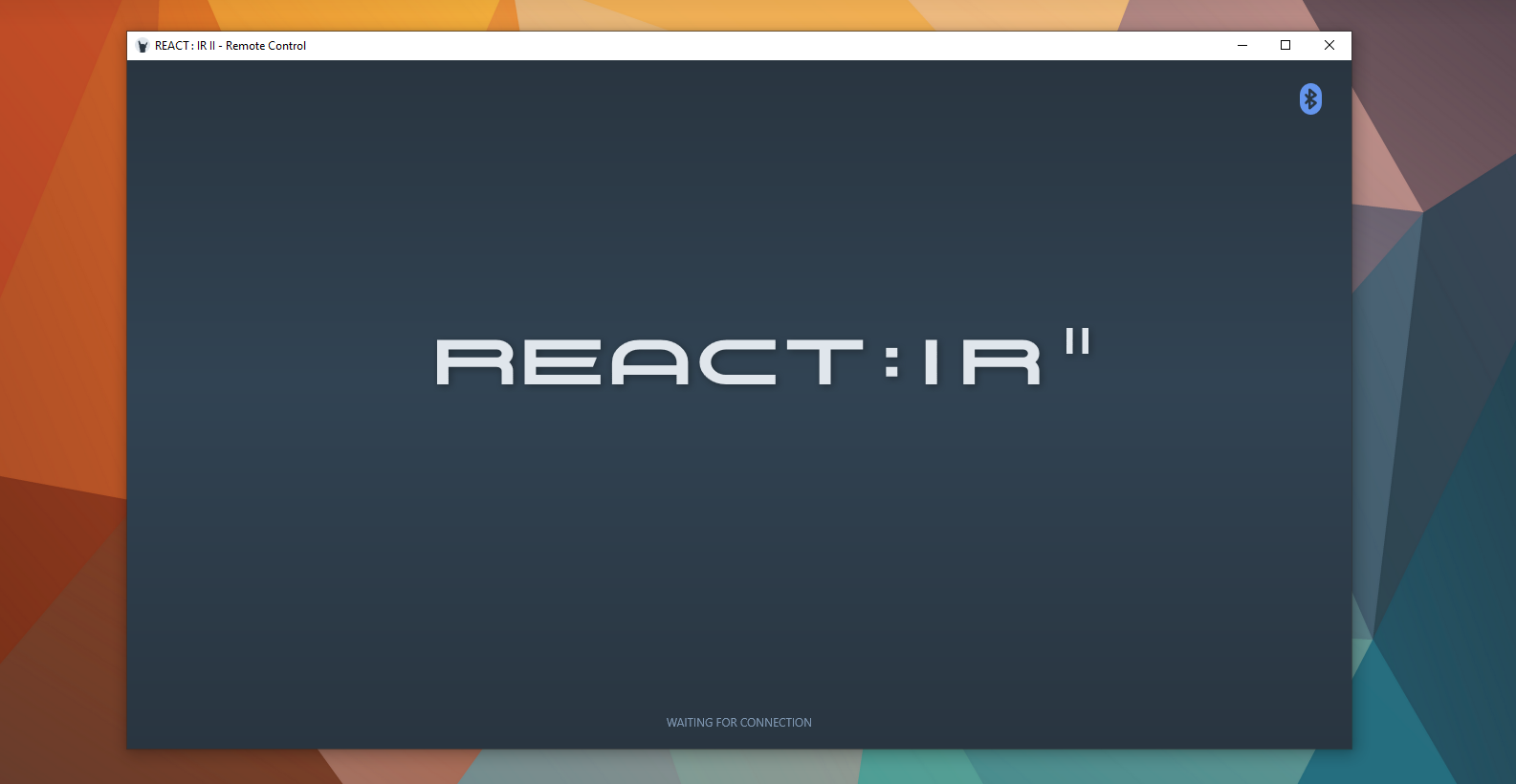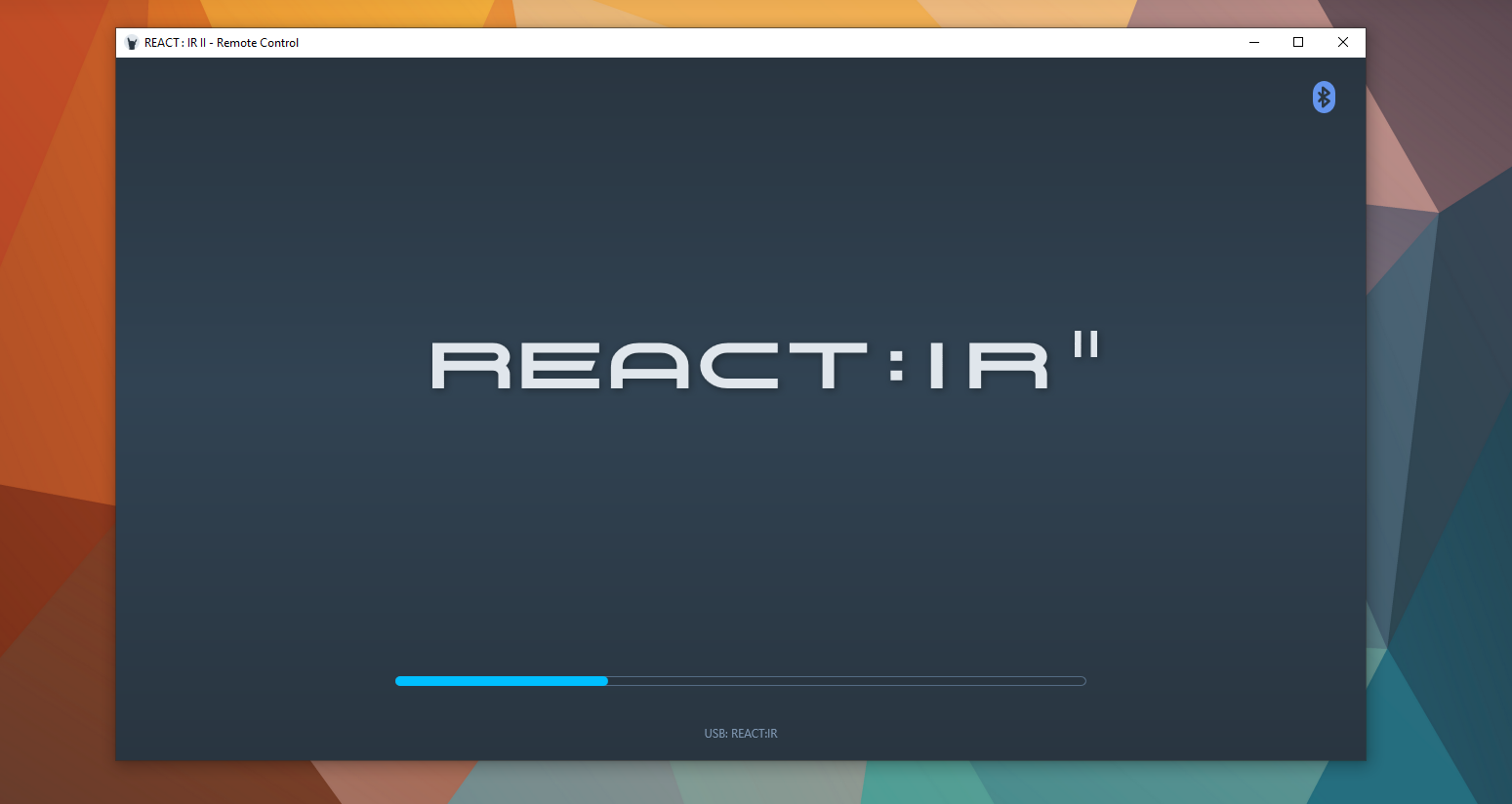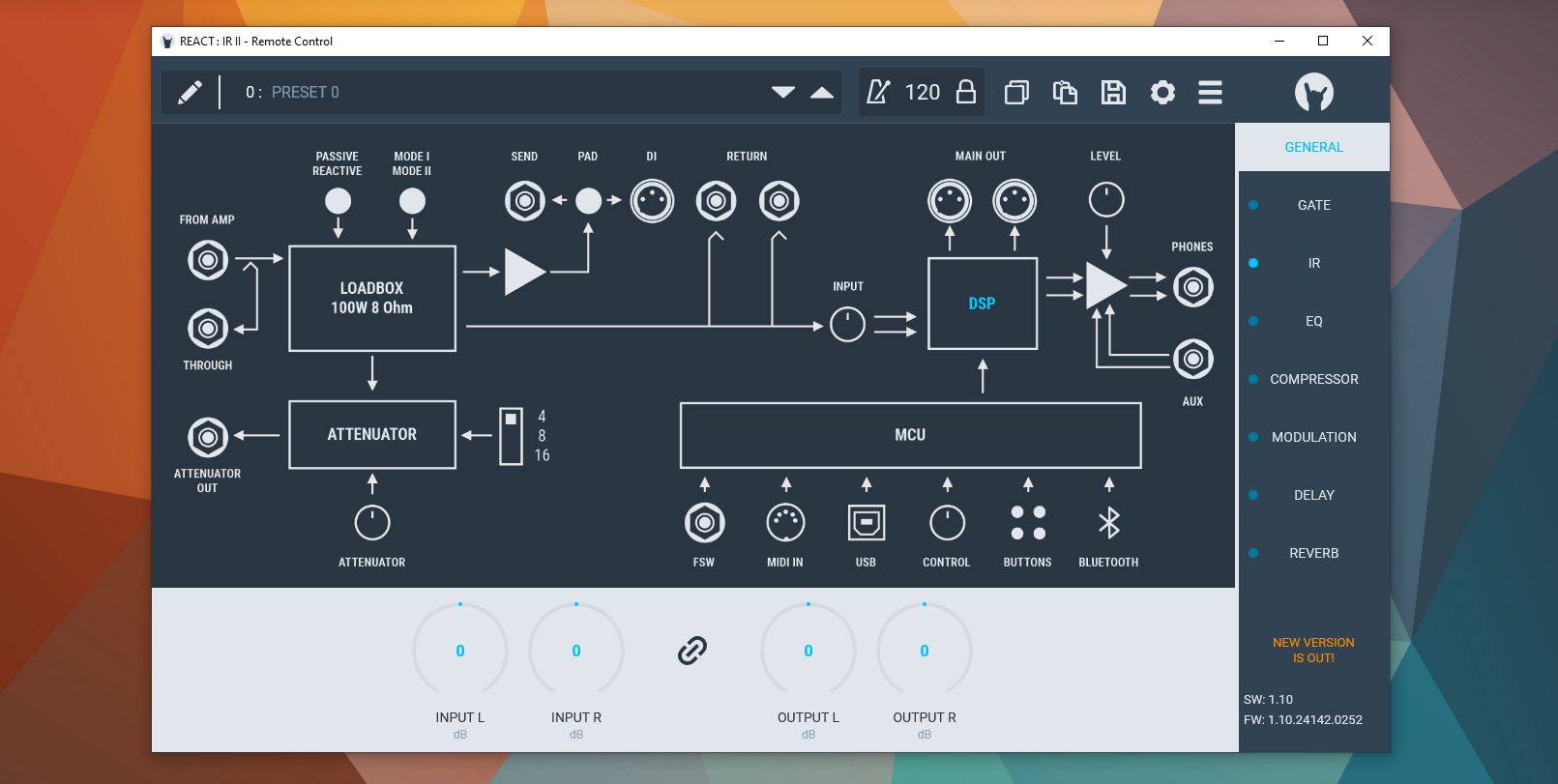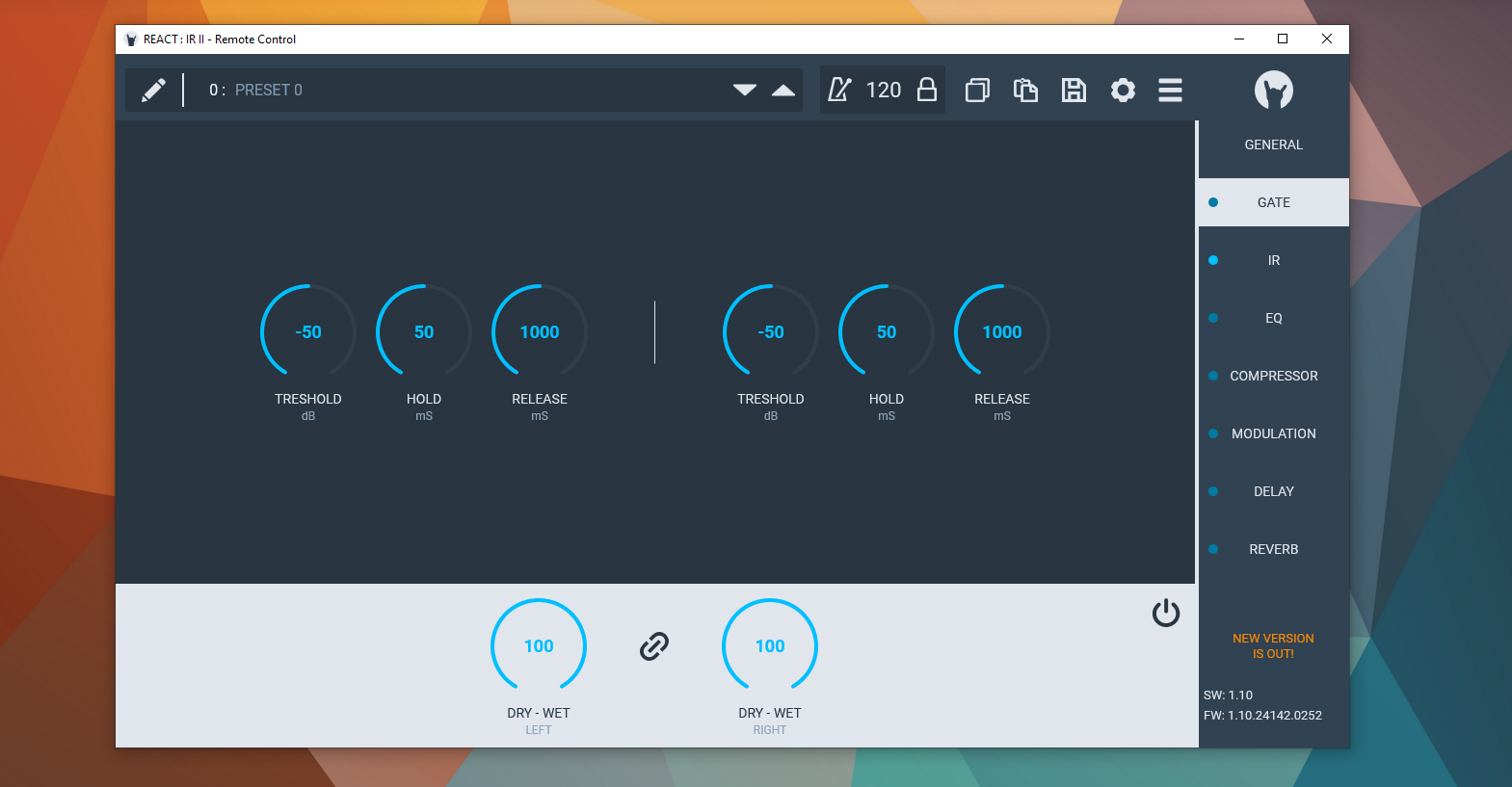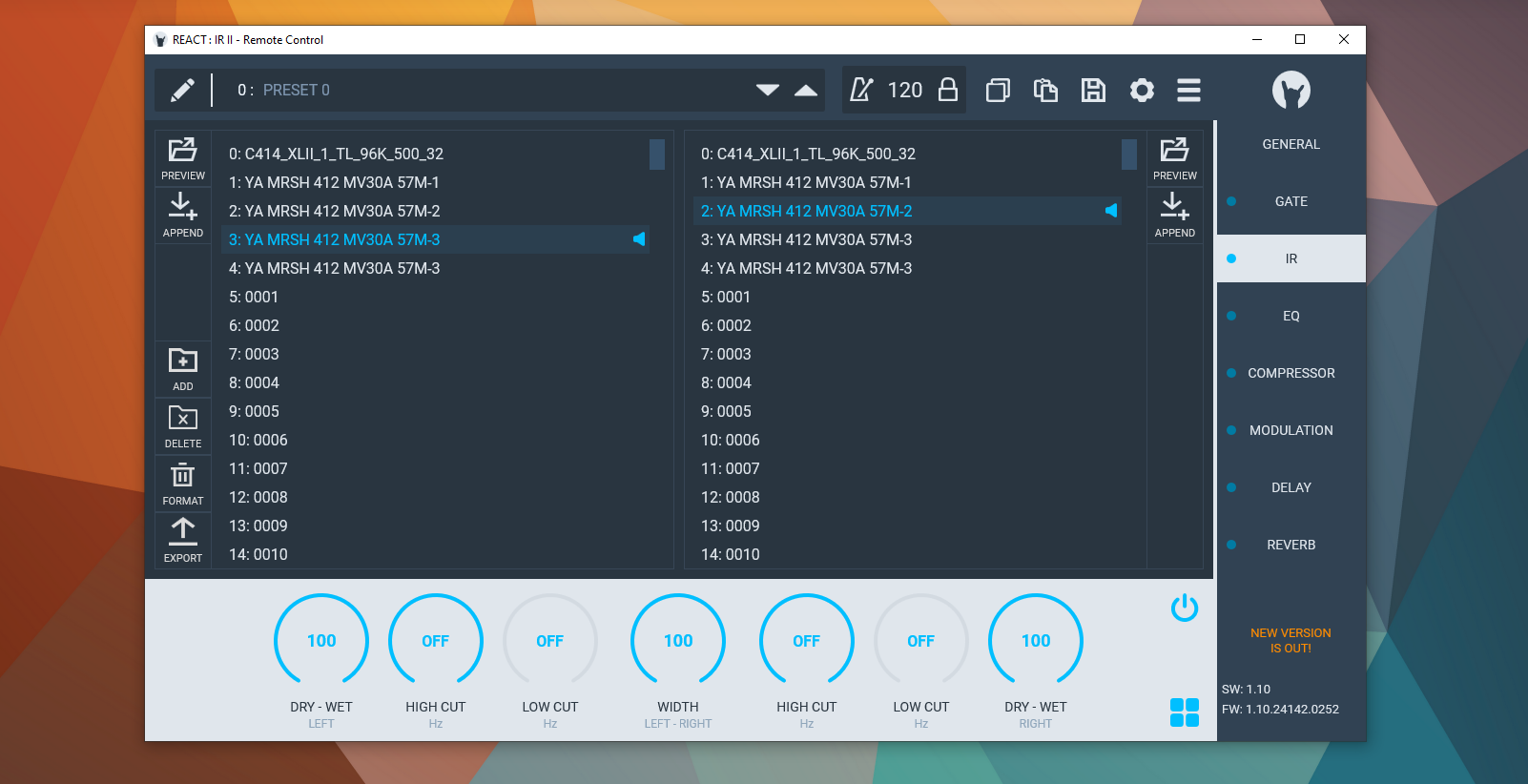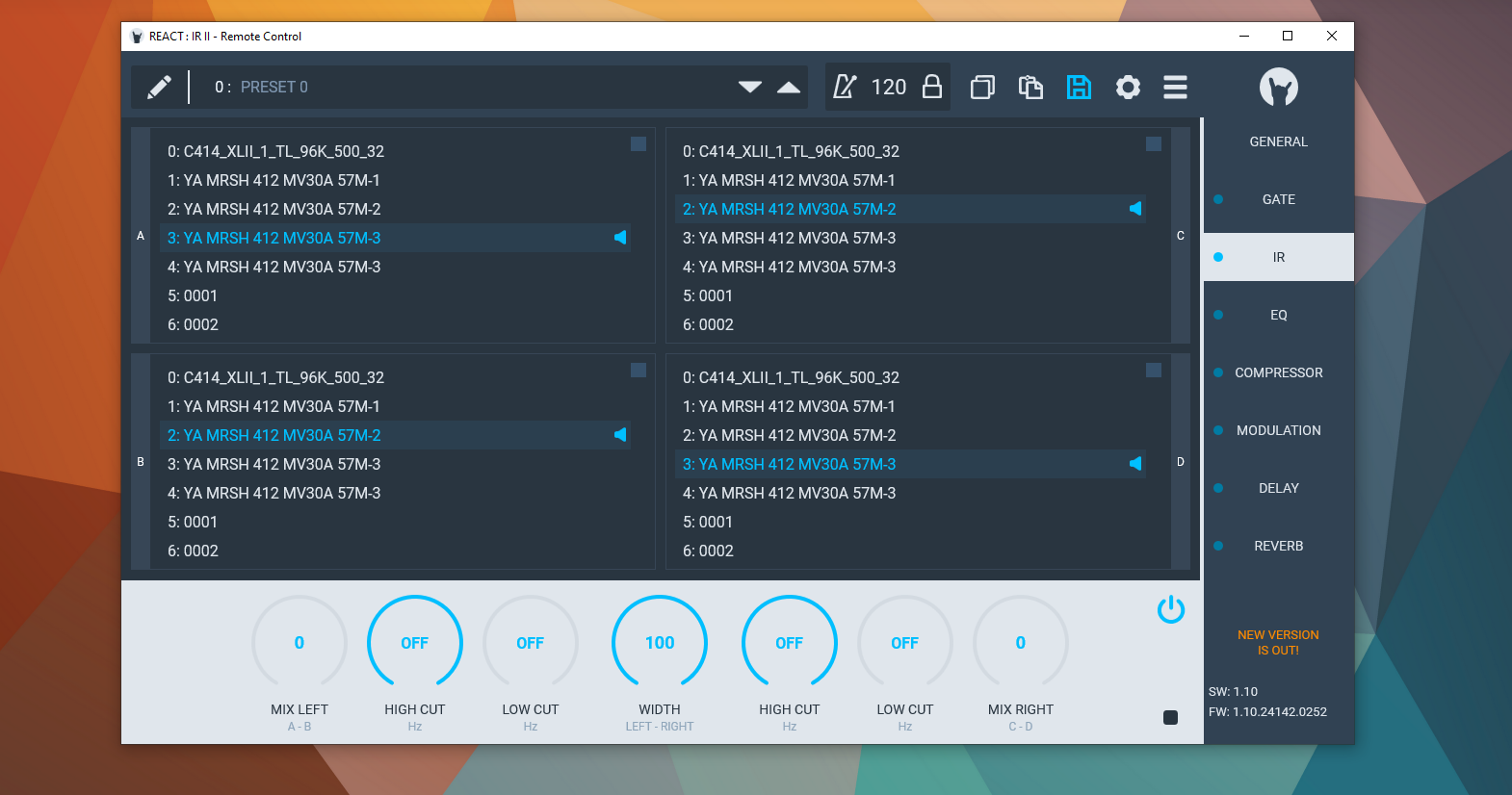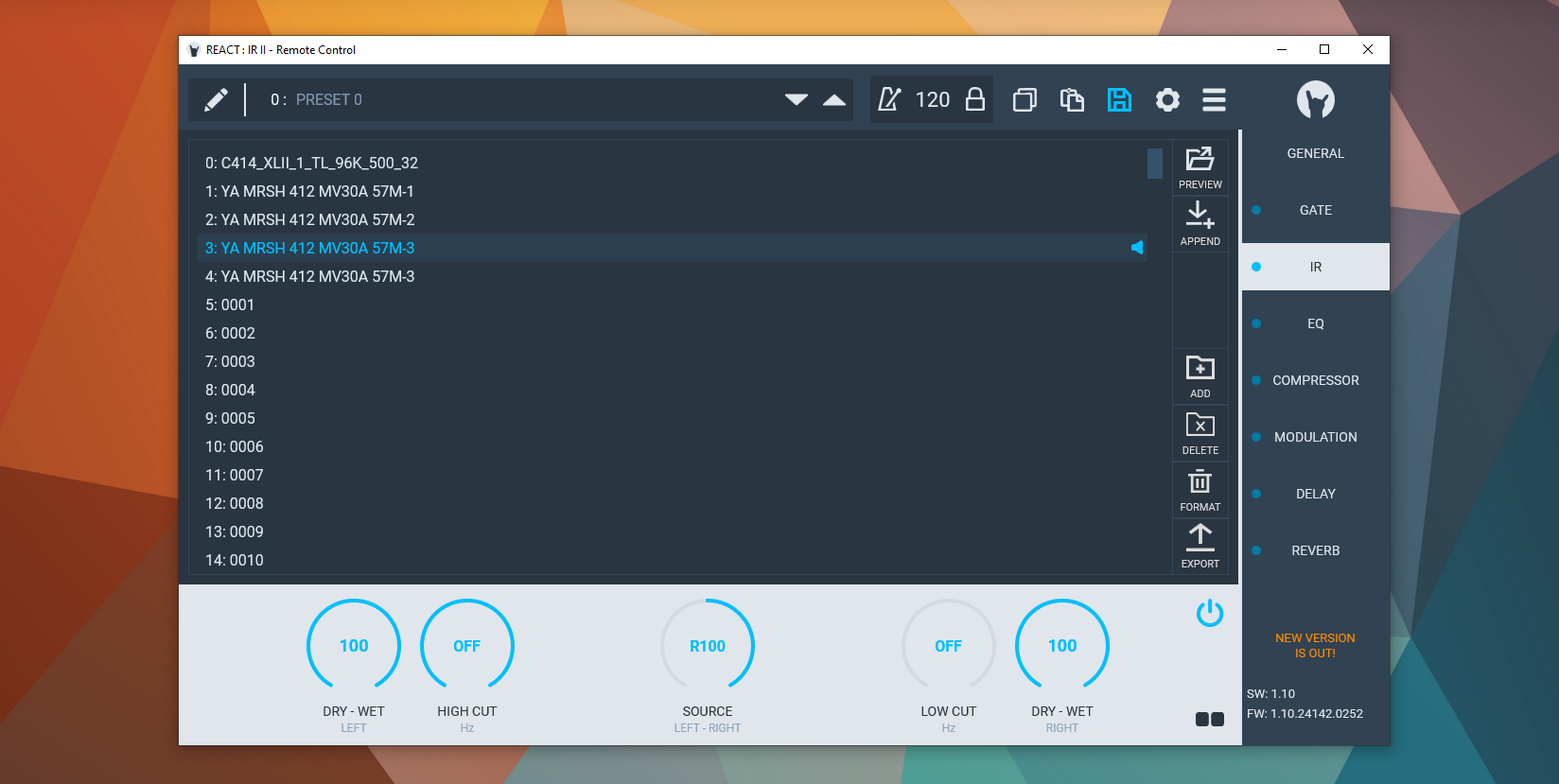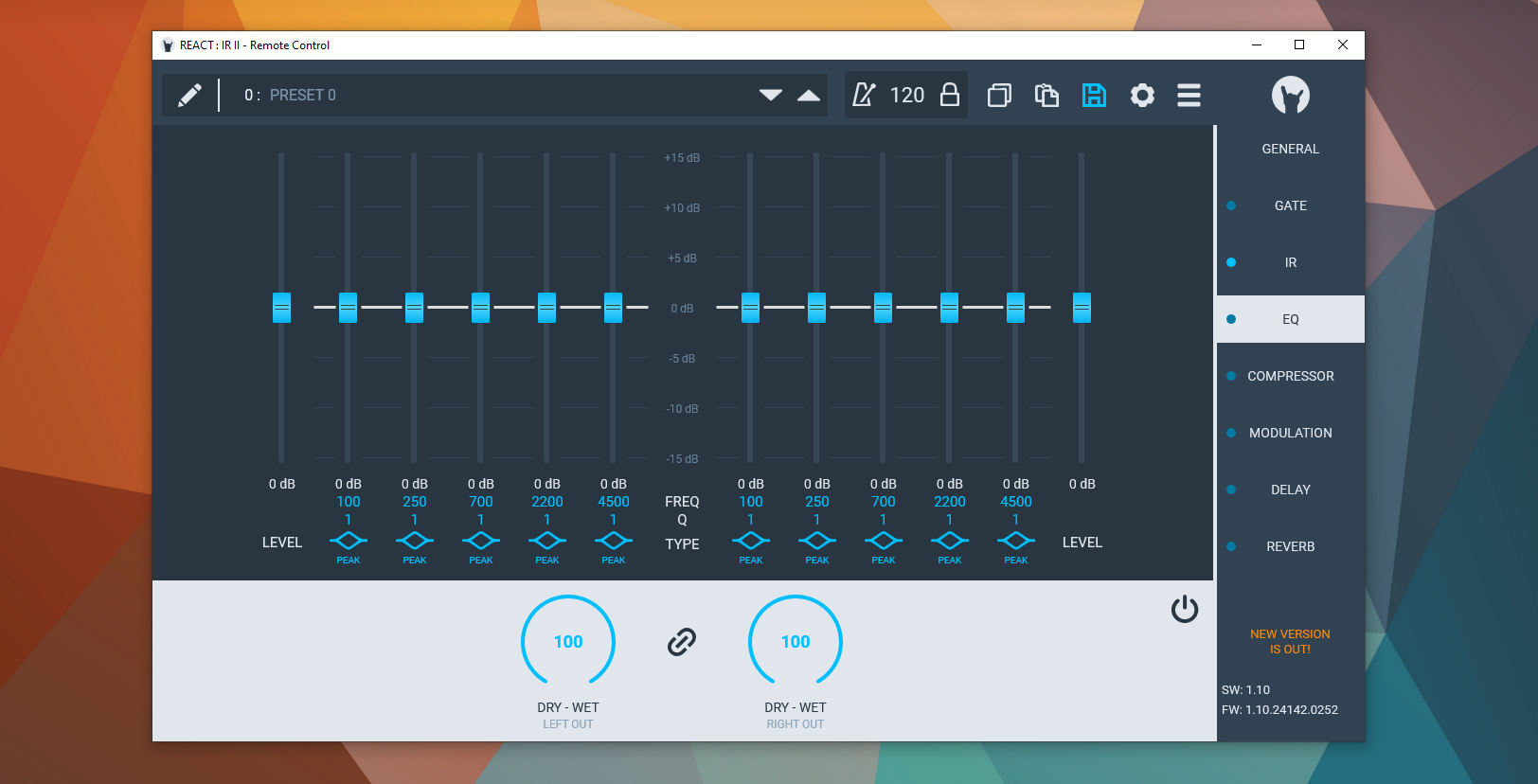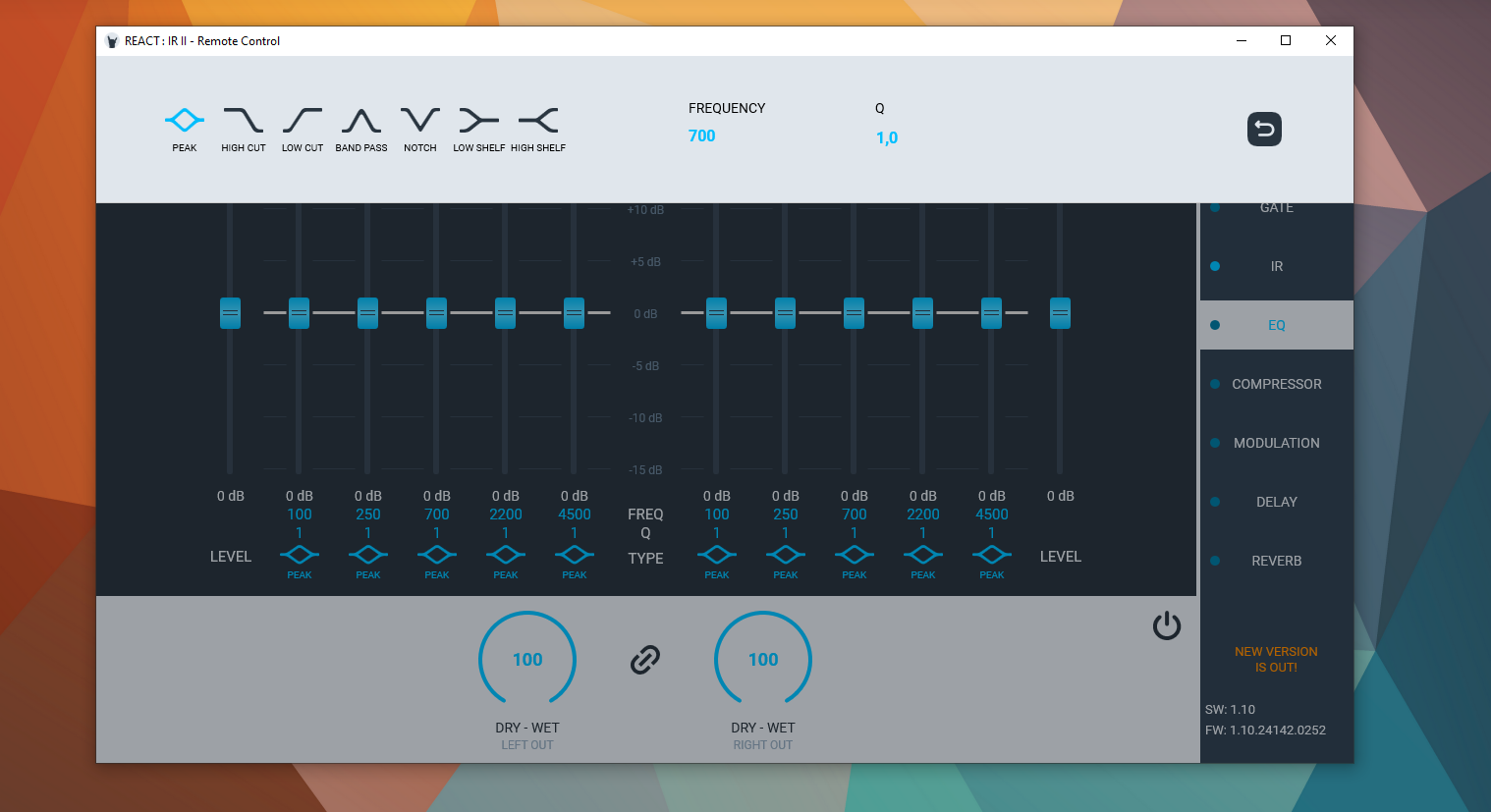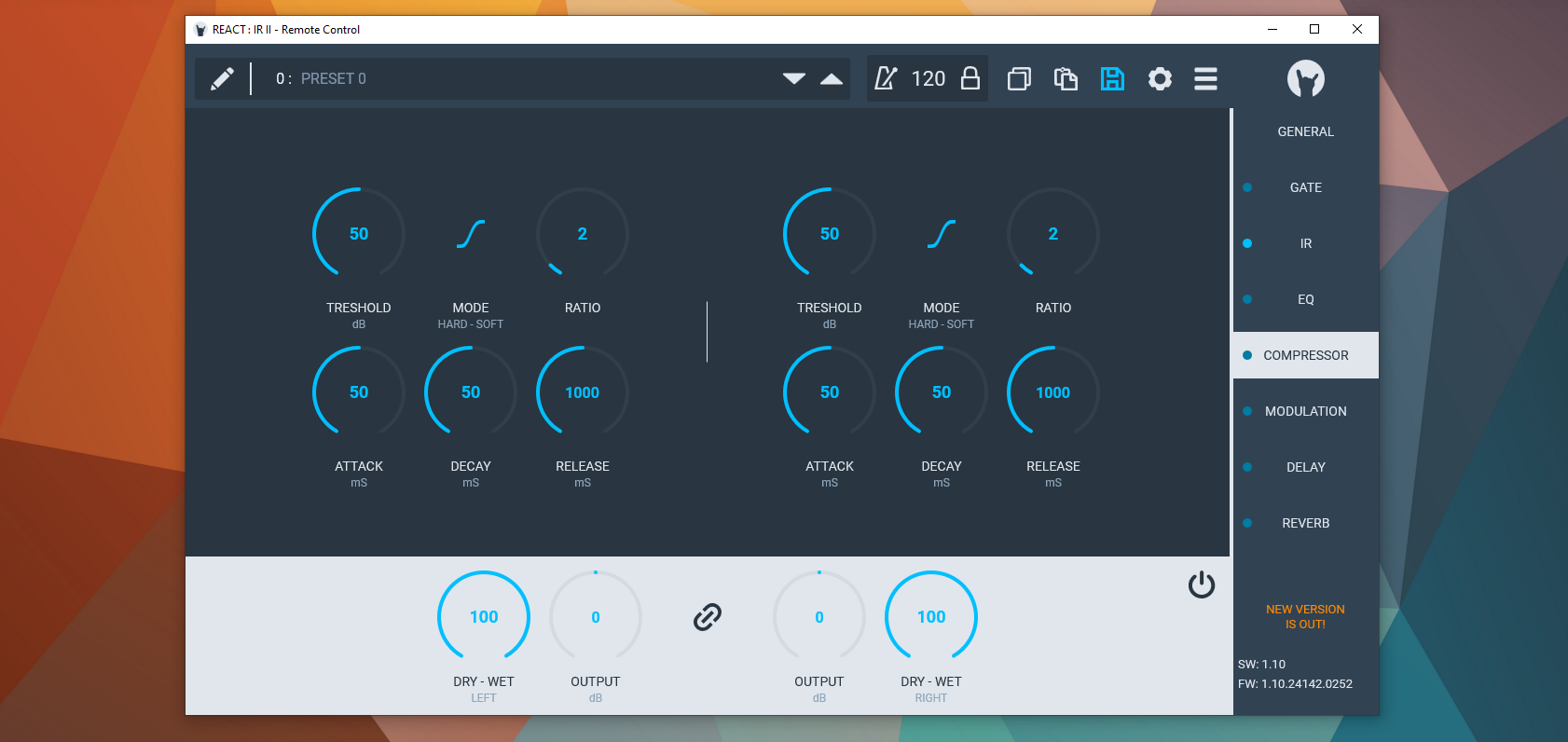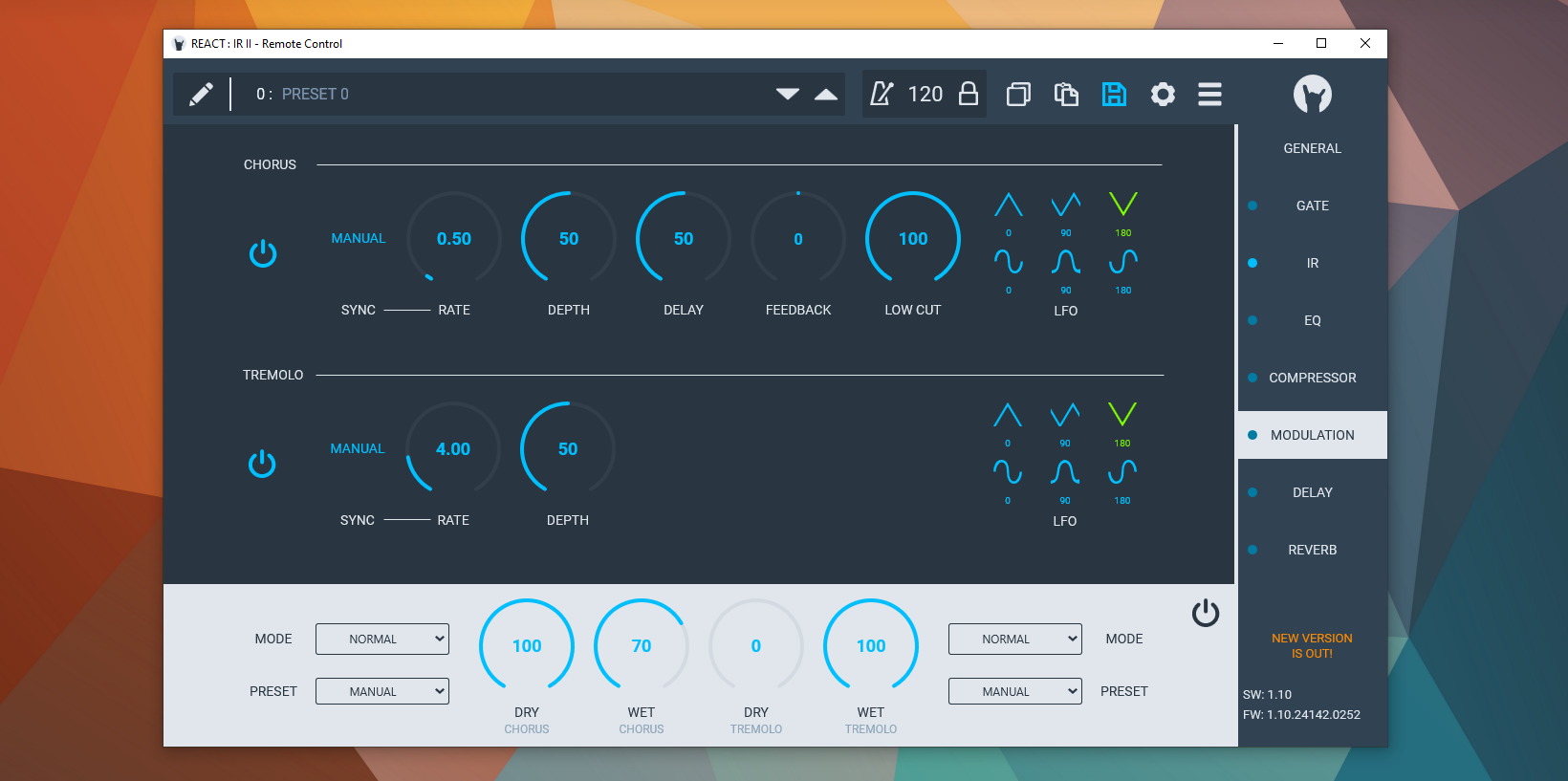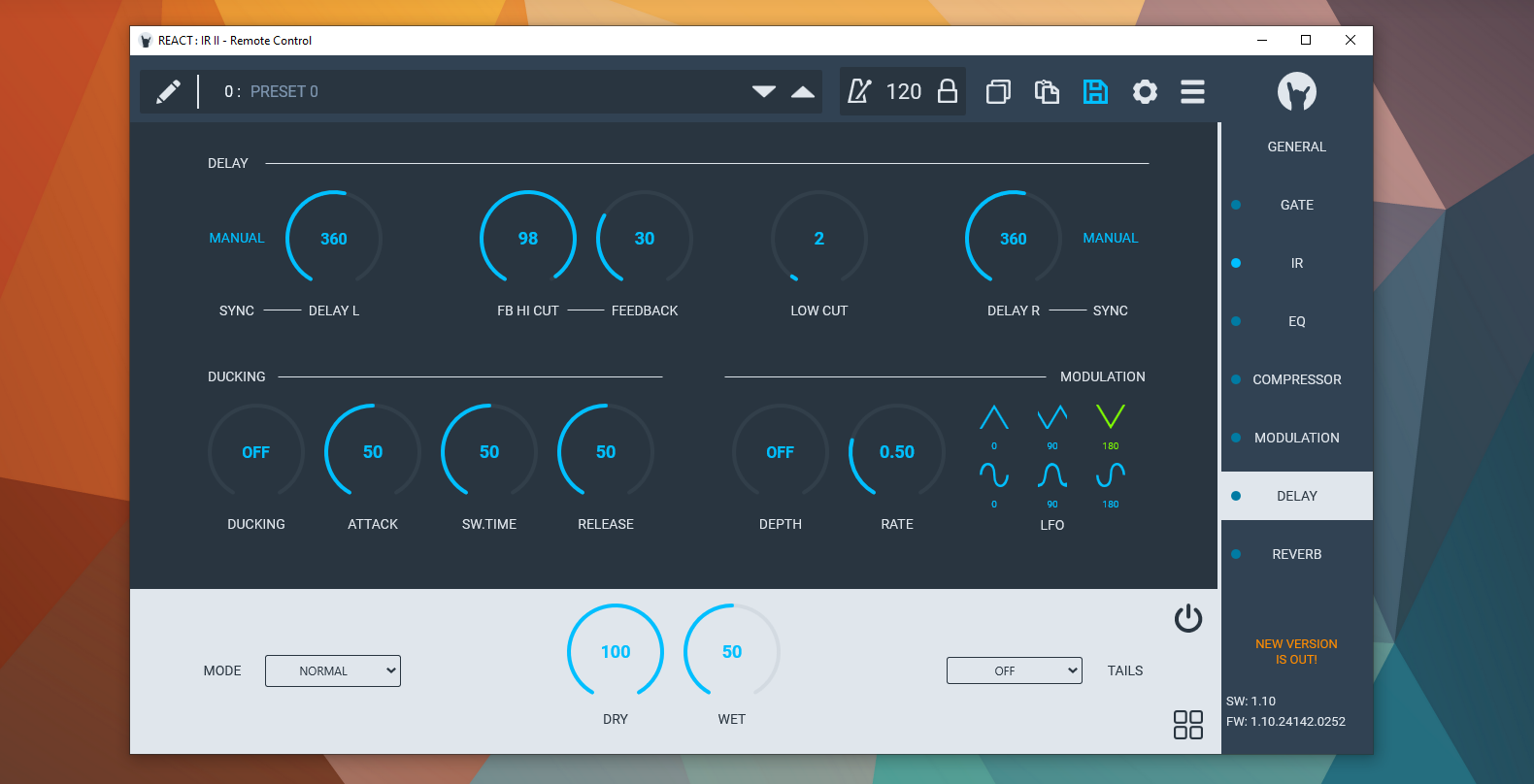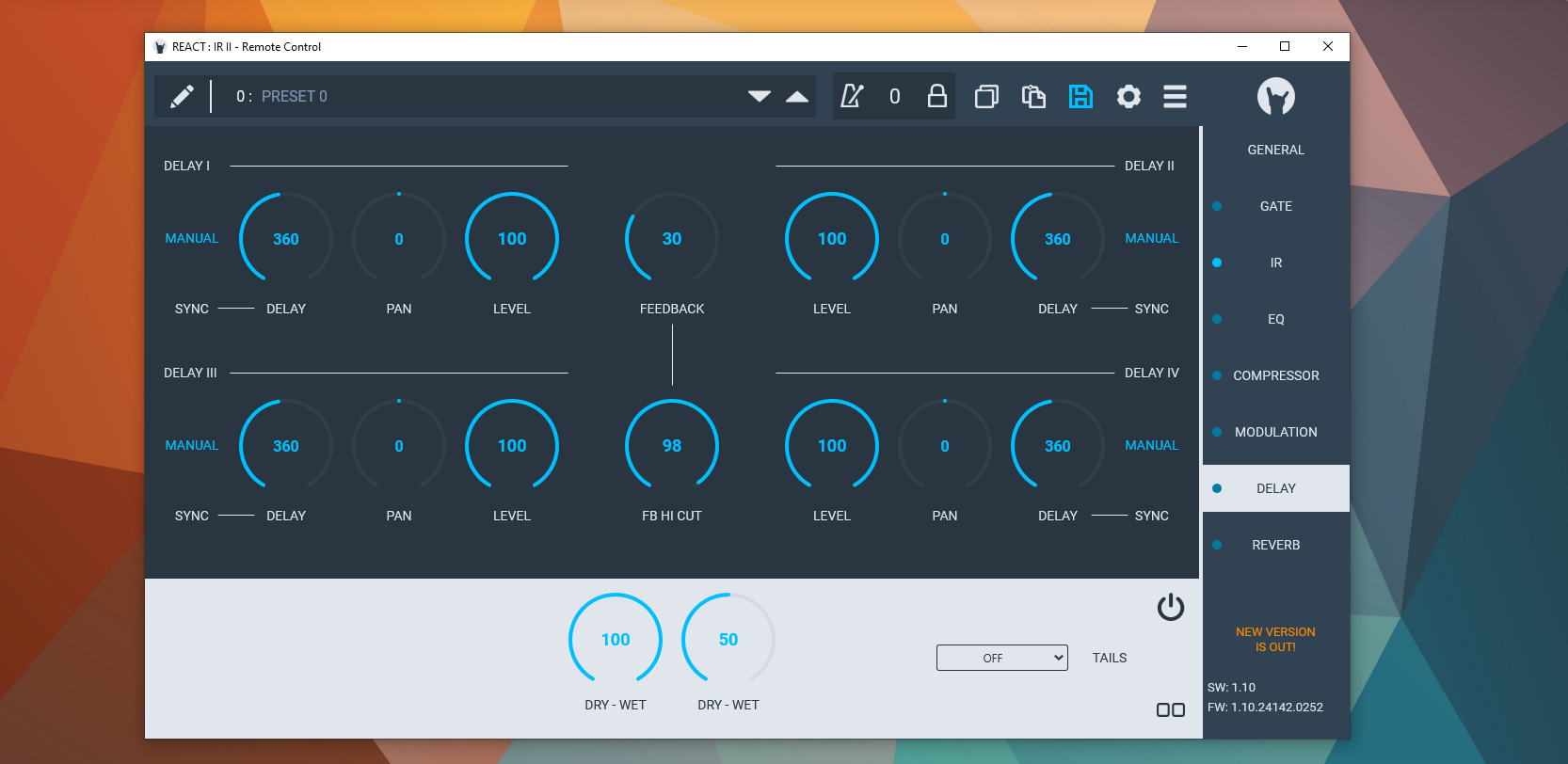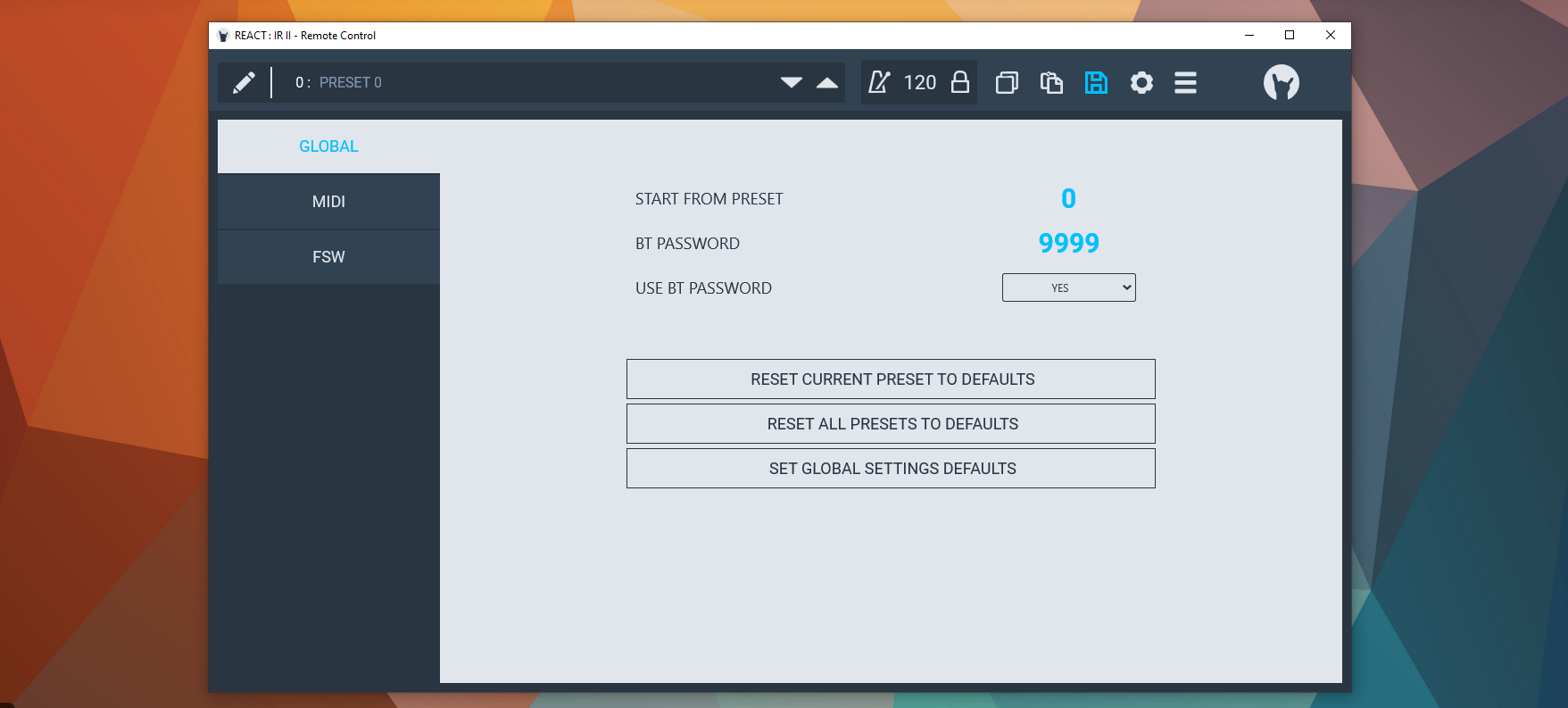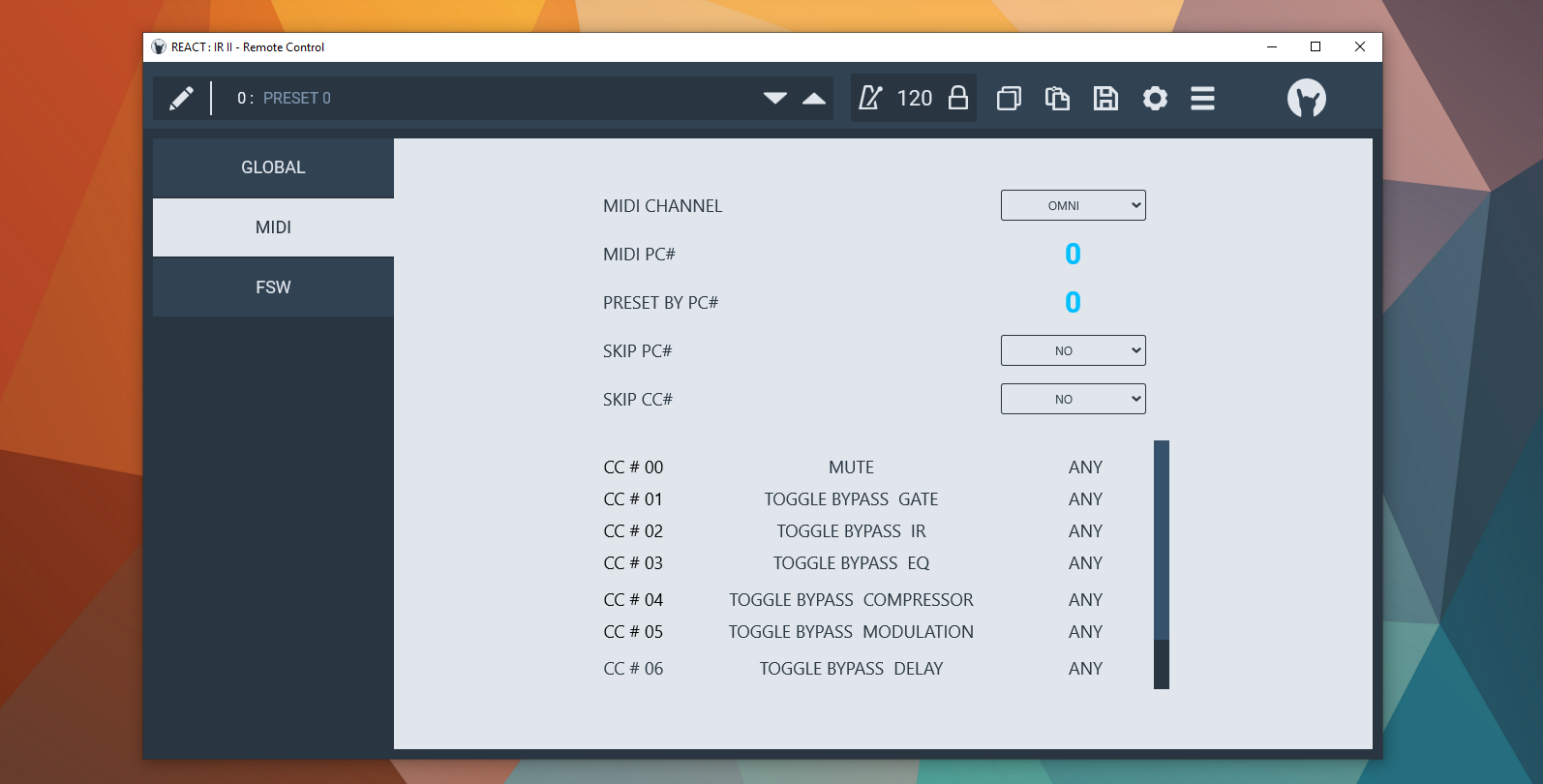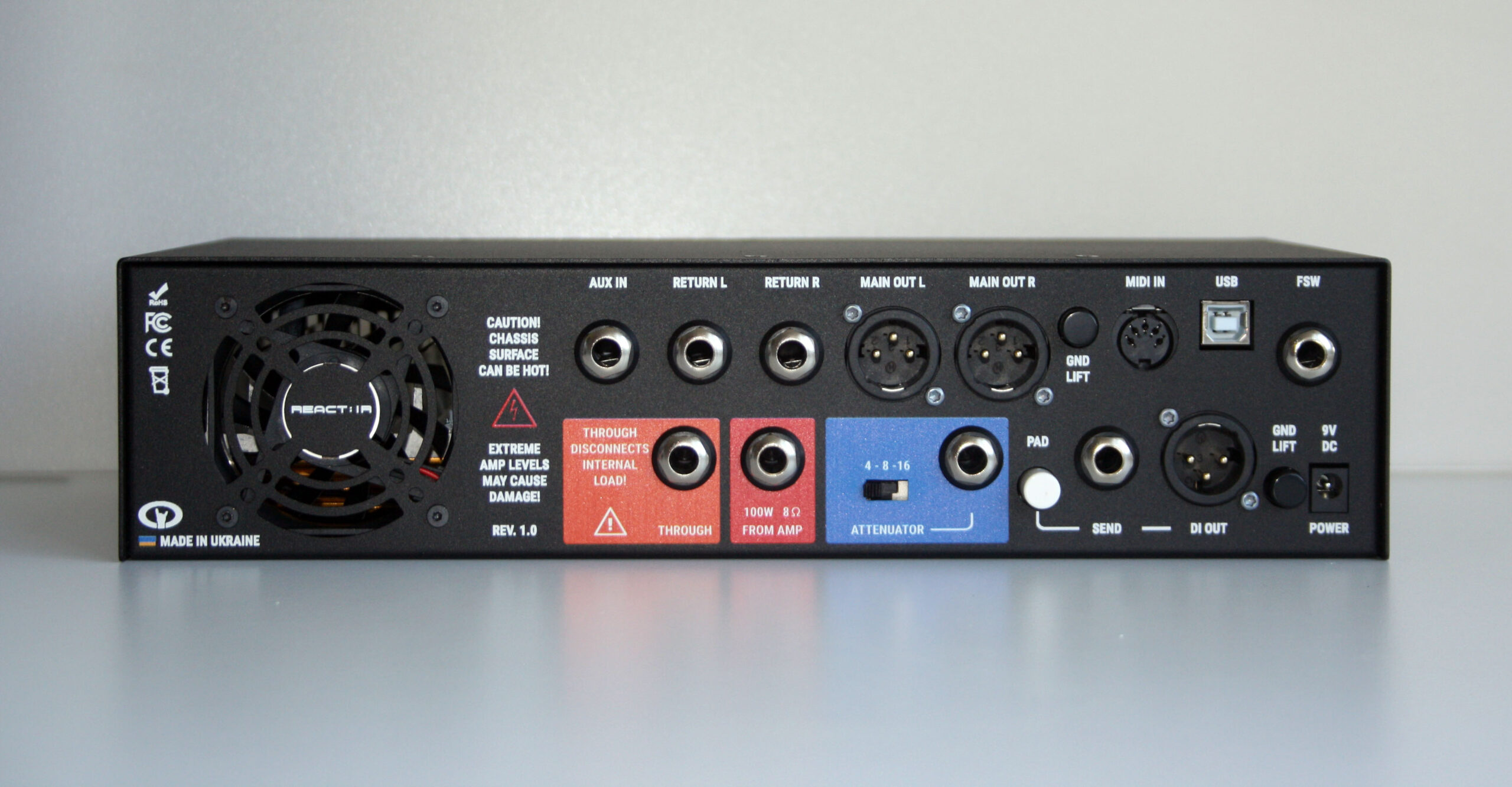REACT:IR II
REACT:IR II
Expanding REACT:IR capabilities even further. Growing power while becoming smaller. Enjoy the stereo DSP processing.
React:IR II – is a reactive-resonance load box, attenuator and the stereo impulse loader with IR length up to 170 ms.
Expanding REACT:IR capabilities even further. Growing power while becoming smaller. Enjoy the stereo DSP processing.
What do “reactive”, and “resonance” mean, and why is it important?
Let`s figure it out, what means reactive, resonance and why it`s important…
Valve (tube) guitar amplifiers have relatively large output impedance due to the output transformer. The guitar cabinet represents a complex reactive load to the amplifier and drastically affects the frequency characteristic of output signal. Adding to this, the majority of guitar amplifiers have negative feedback. This means that some part of output signal returns again to the input of the power amplifier and mixes with the main signal.
Thus, when we speak about a load box, it’s important to understand principles of the device’s operation and its influence on signal. Guitar speaker manufacturers often publish the impedance curves of their respective products. Usually, guitar speaker have their largest impedance at lower frequencies around 70-90 Hz. When inside a cabinet, the peak at low frequencies resides slightly higher, for example, in 4×12 cabinet, the peak is located around 100-115 Hz due to the cabinet construction. Thus it’s important to reproduce not only speaker characteristics, but also the characteristics of the entire cabinet.
Historically, different equipment manufacturers have produced different types of load boxes. Initially, a simple passive type of load is used. Then, reactive types were introduced. However, the term, “reactive”, can refer to only high frequency component without low frequency component. Thus, the term, “reactive-resonance”, load was introduced which means correction not only of high frequencies, but also low frequencies.
React:IR II is true reactive-resonance loadbox. The respective modes can be set using switches in the Loadbox section on the front panel of the device. In addition, the device has attenuator, which allows the usage of an amplifier at maximum volume, while listening at quiet “TV” loudness.
React:IR II has a number of stereo FX-effects:
- Noise Gate
- IR section with single\duo\quad mode
- 5-Band Stereo Parametric EQ
- Compressor
- Modulations
- Delay
- Reverb
About power rating of React:IR:
React:IR loadbox has 100W rating at 8 Ohm. What does it mean? It’s mean that 100W of distorted (high gain) signal can be sent to loadbox, this equivalent to ~150W of sine signal.
One need to understand : when you set master volume of amplifier to 12 o’clock you get ~10% of power. Starting from 12-13 o’clock of master volume, phase inverter begin overloading and this sounds more fuzzy for high gain signals. This exactly why players, when using high gain, don’t like to overdrive power amp section instead using master knob up to 12-13 o’clock. Another case is crunch and clean tones ( both are crunch -) ): they use phase inverter overloading to get more tasty tone.
There are many amps on a market with power more than 100W – Triple Rectifiers, 5150 family, Herbert and others… What will happen with React:IR when using it with these amps? Nothing! It will work properly, but device can be more warm. With master volume up to 12-13 o’clock – you can use any tube guitar amp up to 200W without any limits.
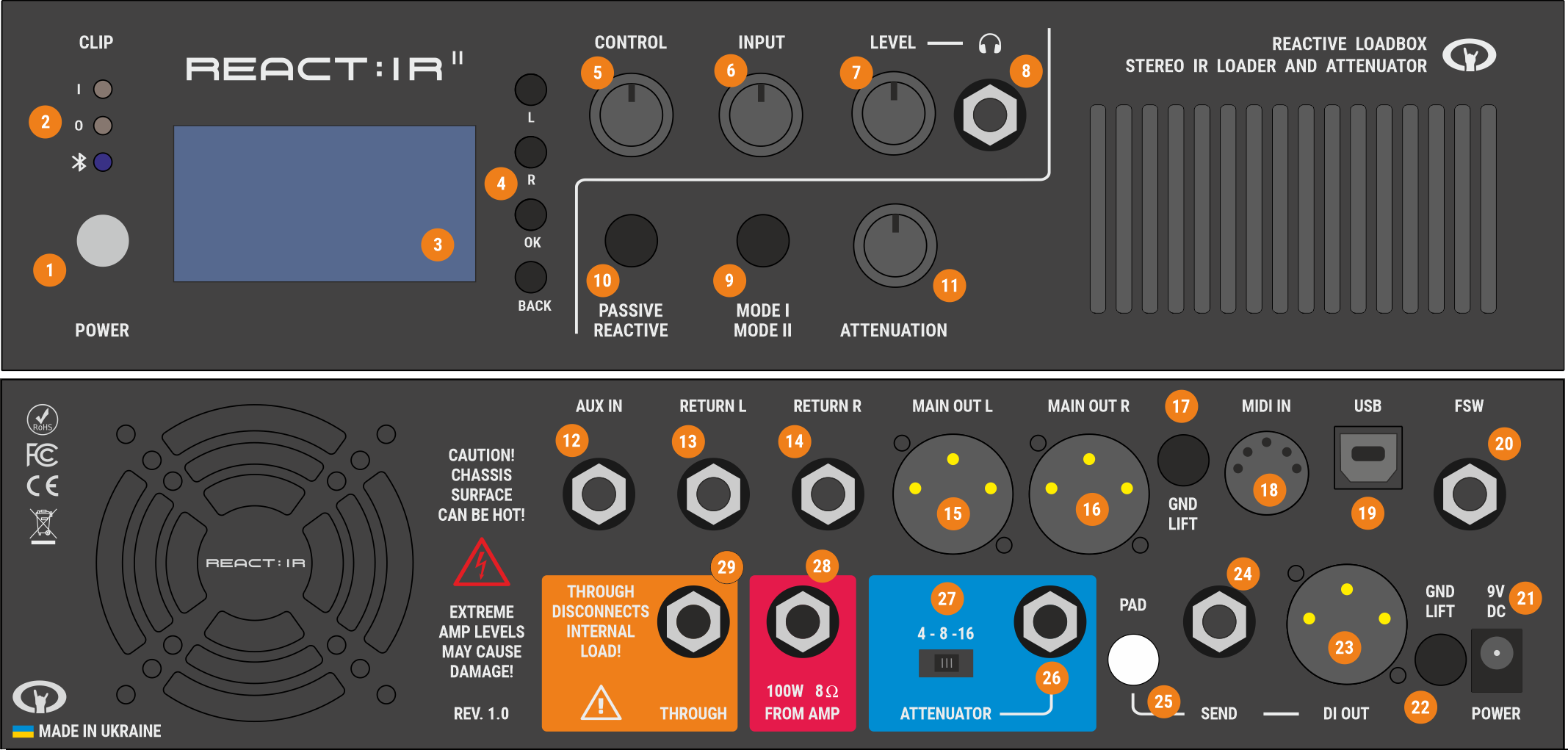
- Power switch
- Indicators: I – input clipping, O – output clipping, Bluetooth
- Main screen
- Buttons
- Main Control dial. Rotate to navigate or change parameter, press to select or set.
- Input level knob, control input level for the impulse loader.
- Headphones level knob
- Headphones output – 32 Ohm
- Loadbox mode switch
- Load mode : passive \ reactive
- Attenuator level
- Auxillary input for connecting external sources like players, smartphones etc.
- Return Left
- Return Right
- Main output Left
- Main output Right
- Ground Lift switch for Main output
- MIDI input
- USB connector for remote control from PC/MAC and impulse response uploading to device.
- Footswitch connector. Support 2 momentary buttons footswitch.
- Power supply connector, use 9V DC power supply with any polarity.
- Ground Lift switch for DI output
- DI output. Balanced analogue output from loadbox. Support Phantom power supply.
- Send Out – the same as DI output but un-balanced.
- PAD Switch control signal level to DI Out\Send Out\Impulse loader. Push on it for the amplifiers with more than 50W power rating.
- Attenuator output
- Impedance selector for attenuator out only!
- Input for power amplifier output. Reactive load is suitable for impedance of 8 Ohm with nominal power of 100 Watt.
- Through output for cabinet connection, when jack inserted, internal load and attenuator are disconnected. Careful with amp level, when switching to this output. Through is disconnecting internal loadbox!
ADC and DAC characteristics:
- Sampling frequency up to 192 kHz
- Resolution: 24 bits
- Noise level : -109 dB (A-weighted)
Power supply:
- 9 V DC, any polarity
- Consumption: up to 500 mA.
Reactive loadbox:
- Input impedance : 8 Ohms
- Admissible power : 100W RMS
- Measured latency 1.3 msec
- 32 bit floating point, 48 kHz
- Internal impulse format: 48kHz, 32 bits, maximum length 8192 samples (170 msec).
Dimensions & weight
- Width x depth x height: 300x 170 x 73 (mm)
- Weight: 3 kg (device only )
Equipment and packaging
- 1 x React:IR
- 1 x Power Supply
- 1 x Power adapter.
- 1 x USB Type B cable
- Packing size 47x24x17cm
- Packing weigh 4.2kg
Connectors
- Speaker Input: 1/4″ (6.35mm)Jack unbalanced (TS, Tip/Sleeve)
- Speaker Thru: 1/4″ (6.35mm)Jack unbalanced (TS) – Directly connected to Speaker Input. Disconnects the loadbox when used.
- Attenuator: 1/4″ (6.35mm)Jack unbalanced (TS).
- Return Left + Right: 1/4″ (6.35mm)Jack unbalanced (TS).
- Send: 1/4″ (6.35mm) Jack unbalanced (TS, Tip/Sleeve).
- D.I. Balanced Output: XLR.
- Main Left + Right Balanced Output: XLR.
- Headphones: 1/4″ (6.35mm)Jack unbalanced (TS). 32 Ohm
- Aux In: 1/4″ (6.35mm)Jack unbalanced (TS).
- USB – TYPE B
- MIDI input – DIN5 Connector
- Power – DC5 2.1mm
